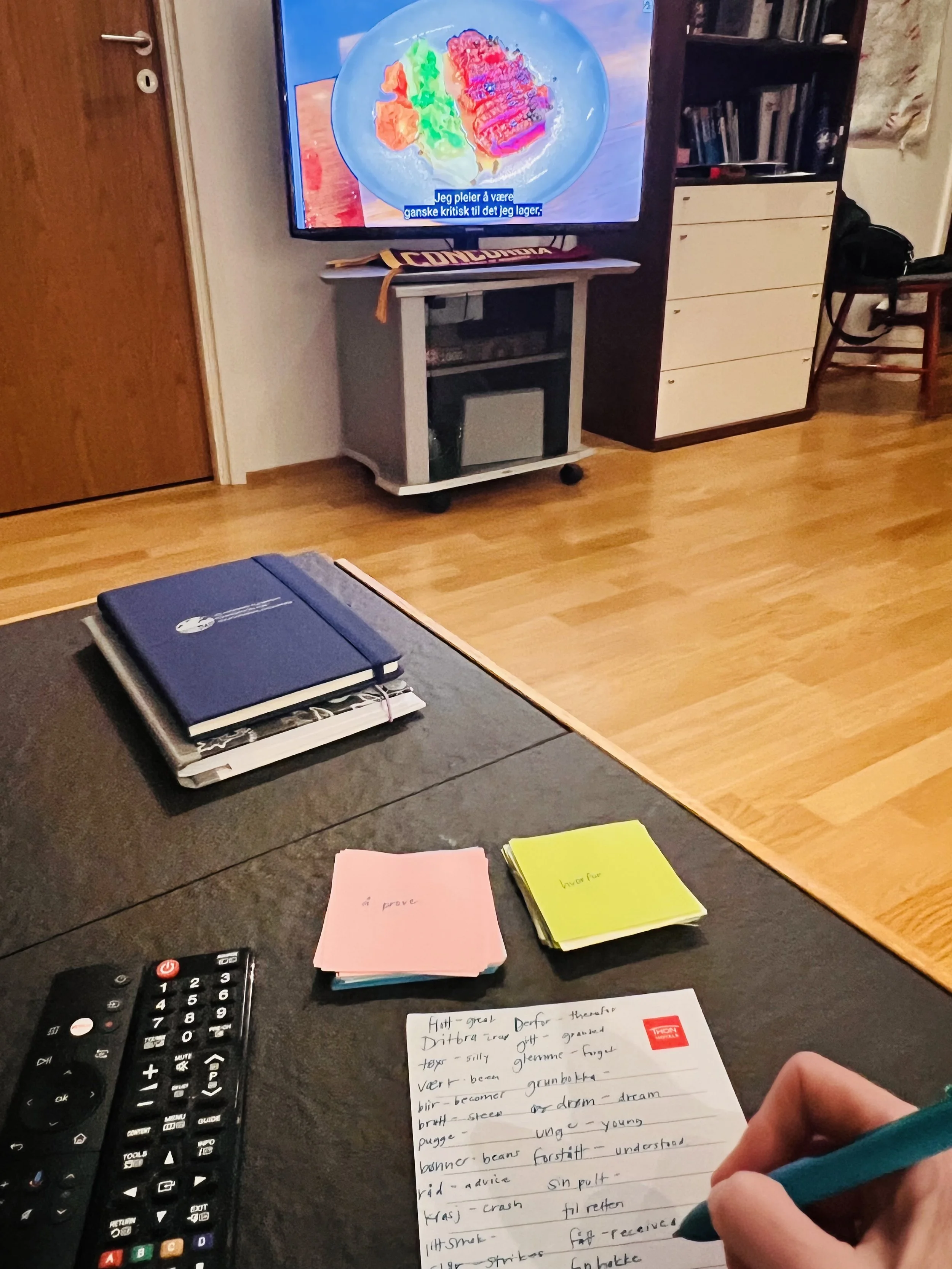Learning a New Language
This past week, I was in Halden for a foreign language conference. The evening before the event, I climbed the Fredrikstad Fortress and this photo was taken. At first, I was going to delete the image of my disheveled hair wisping all around my head. But then I thought that my crazy hair really represented the feelings of disorder I’d been having about learning Norwegian.
Learning a new language is challenging!!
I’m just going to say it- learning languages is difficult when you’re older. I know the research suggests that children can learn languages easier and a faster pace than adults. Those who have learned multiple languages at an early age are also typically able to learn additional languages easier as well. I learned my second language (Spanish) as a teenager and now I’m trying to learn Norwegian. Uff.
Yes, most Norwegians speak English, so I don’t need to learn the language. However, I want to learn the language. I want to engage with local and demonstrate my respect for their Norwegian language. I also want to challenge myself to read signs, menus, and texts without using Google translate.
However, I was quite delusional when I thought that I could master the basics of a new language in a matter of months. The irony here is that I work with multilingual learners back in the US and I teach my teacher candidates how to support their students learning English. I know better. I know that it takes time to learn conversational language and YEARS to learn academic, more technical language.
My first, proud Norwegian-speaking moment was ordering a coffee at the PUST Kaffebar down the street. The server ever so patiently waited for me to stumble through my order in Norwegian. She didn’t correct me or speak in English; she smiled and slowed her rate of speech so that I could understand what she was saying. As I waited for my “dobbelt latte, kaffenfri, med havre melk,” I saw a postcard for their Frukost Klubben, or breakfast club. Ok, I thought, I need to put myself out there. If I want to learn the language, then I need to interact with more people.
When I arrived for that first Frokost Klubben, the same server was there to welcome me. I set my things down at a table on the room’s perimeter and selected tasty food items for my breakfast plate. The server, Rachel, approached me and suggested that I sit at one of the two center tables as they are specifically there for folks to meet new people. She also pointed out that her roommates were sitting at the one table, and they would love to talk with me.
I collected my breakfast and things and was warmly welcomed at the table. We tried speaking in Norwegian for a few minutes, but I instantly went into panic mode and the women naturally switched to English. The second Tuesday breakfast was the same. On the third breakfast, one of the women at the table spoke in Spanish so I talked with her momentarily. The problem was that I couldn’t switch to Norwegian! I was speaking with a hodgepodge of Norwegian, Spanish, and English. Gah! I left feeling disheartened…
Two days later I attended the Language Café at the University of Oslo, a twice-monthly meeting of people to practice different languages. We didn’t have a student to lead our Norwegian discussion right away, so I almost left. After time, though, two men joined the group and provided some helpful suggestions. We practiced ordering coffee respectfully and we were encouraged to be more confident when speaking, for when we hesitate, they said, we mumble. Ok, noted.
In addition to speaking confidence, I’m trying to be more focused on listening. Instead of instantly panicking when someone speaks to me in Norwegian, I’m trying to focus on what they are saying. To do this, I decided to watch some TV, something that I rarely do in the US. Once I figured out how to actually operate my TV, I found the show, Kokkeskolen (Cooking School); similar to the Great British Baking Show. I watch intently, listening carefully for words that I know, and then I write down unfamiliar words as I am able (thank you, subtitles!). I’ve already learned some helpful words like gaffel (fork), skje (spoon), kniv (knife), and tallerkin (plate). The slag and swear words are fun to hear because they are not found in my Norwegian-learning textbooks.
Each episode of Kokkeskolen presents a long list of words that would be beneficial to know, and if I hear them regularly on the show (as well as review them with my little flashcards), it should help. It’s a start. People in Norway are very kind and helpful, so I am grateful for that. I’ve come to terms with the fact that I’m not going to leave Norway as a fluent conversational speaker, but I am giving the language learning process time and a great deal of effort. If anything, the discomfort that I feel as a language learner is beneficial to my teaching practice as I strive to help multilingual learners and teacher candidates who are, or will be, working with students learning English as a new language back in the United States.
Using the Kokkeskolen TV show (and its subtitles) to work on my Norwegian listening skills and vocabulary acquisition.


